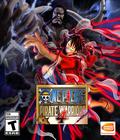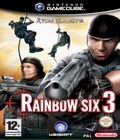Genre: Tactical Shooter
Publisher: Ubisoft
Developer: Red Storm
Release Date: March 23, 2004
Buy 'RAINBOW SIX 3': PlayStation 2
Many books have become movies, and a selected few have even become games. One of the more revered book-to-game translations would probably be the line of books which Ubi Soft is renowned for: their interpretation of Tom Clancy’s line of books, such as Splinter Cell and Ghost Recon. These games have all hit several different systems, but the PS2 was left out of the Rainbow Six 3 release, a popular anti-terrorist game which was a smash hit on the Xbox. Ubi finally decided to release the game for us PS2 gamers, but how does it fare?
Well, I’ll give it to you straight – if you had to choose between the PS2 and Xbox versions, the trophy goes to the Xbox in almost all aspects. One major difference between the PS2 version and the Xbox version is the multiplayer play. The Xbox allows up to 16 players, while the PS2 only gets six. I would love to be told Ubi’s reasoning behind this decision, since I feel at least a team of four is the most ideal formation. But six? Three versus three just doesn’t cut it, nor will it be able to usurp Sony’s throne for online shooters SOCOM II, with its 16-player ability.
So how does Rainbow Six 3 compare to SOCOM? Well, one major difference is that Rainbow Six is in first person, while SOCOM is in third person. You may be tempted to classify these two games in different genres because of this deviation, but I personally place them together as shooters. Although I clearly enjoy SOCOM II more, one thing that is more evident in Rainbow Six is the sense of realism. Both games replicate real life events, as evidenced by the fact that when your character is hit by a grenade or shot in the head, you are instantly killed. And it’s more apparent in Rainbow Six than in SOCOM II. If you have played the PC version, you already know how true this is online: the first person to see the other almost always wins. This is also true in the online play for the PS2 version.
Online play for Rainbow Six 3 is just not as solid as it could be, and you are given only three modes available to play: Survival, Team Survival, and Sharpshooter. The names explain themselves pretty well with the exception of Sharpshooter, whose objective is to be the person with the most skills. The catch is that when you die, you respawn until the time runs out. In general, the console version is lacking in comparison to its PC counterpart where multiplayer modes are concerned, missing some PC-only treats like hostage rescue and terrorists time. Even without these options, though, the online mode does have a few perks, such as no lag (which we SOCOM II players are very familiar with), no wait time, and the ability to change maps whenever the host so desires. But the heart of the game resides within the single player mode.
There are a total of 14 maps/missions, each with almost identical objectives. You will be asked to rescue hostages, defuse bombs, find certain objects, and just outright eliminate the terrorist threat. Unlike Splinter Cell, where everything is about stealth, Rainbow Six is more of a run-and-gun shooter. Being detected doesn’t mean Game Over; you can actually go a-blazing against the terrorists, and most of the time, they won’t kill the hostages or destroy your main objective. The only exception is when the terrorist are in the same room as the hostages. Once you enter the room, if you don’t stun them, their focus will change from you to killing the hostages. If they’re successful, you’re left with nothing more than Game Over.
Well, in order to reach your objective points, you have to work for them. Most of the time, the terrorists are already waiting for you, so you will need to utilize your team to the fullest, ordering them to breach the door, open frag and clear, open flash and clear, and so on. In order to organize them most effectively, it’s suggested that you get the microphone, because you have more QOI (Quick Order Interface) commands you can voice out to your team to execute. This is especially helpful for the rooms where the door(s) are already propped open. Ubi Soft did take into account that not all players have or will buy the mic, giving these players access to the more crucial QOI commands when you hold either the square or x buttons. Without the mic, you are given up to four possible commands, greatly restricting your team’s control. For example, without a mic, you’re unable to flash and clear out a room with an already propped open door, making it hard to ensure the safety of yourself as well as the team.
Team control is especially crucial for your mission’s success. A strong leader can produce the necessary results with the least amount of effort, while a sloppy one can incapacitate the entire team, forcing them to rely on checkpoints and infinite continues. Some rooms may also require you to split up the team, entering the room from two different directions and moving on Zulu commands. The only downside is when you want to split the team, you work alone while the other 3 breach the other door. It would have been nice if you could split the team into 2 groups of 2, like you can in SOCOM. One thing that Rainbow Six 3 shines in is the amount of control you have over the team, allowing you to order the team when to move and open the door, while SOCOM requires you to do it all yourself. When you open the doors, SOCOM completely props them open, while Rainbow Six allows full control of the door, propping it open slightly to take a quick peek. Just like in real life, you will always want to look ahead, trying not to alert the terrorist of your advancements. Although, one thing this game really needs is a mirror or optical cables so we can see into the next room.
The rooms usually consist of a window and maybe some inanimate objects such as tables and shelves. If you’re lucky, you may even find objects you can use for cover. Yet this doesn’t happen often; your team’s only cover is usually the door or the corner of the wall. Thankfully, the maps are all linear, so you rarely have to cover your rear or even backtrack because you went the wrong direction. But because of this linear system, you can assume where the enemy may be and where they might be setting up. So to make up for this, they took away the ability to distinguish the origin of the bullets, which I feel is a horrible idea. When I’m getting shot at from behind, I can’t even tell which direction to turn unless I’ve taken a direct hit. You would think we can use our ears to distinguish the general direction the enemy is firing from, but I guess Ubi thinks otherwise.
Hearing the gun fire, I usually react to it and try to shoot down the enemy before they get me, but not knowing the general direction the firing is coming from, it’s hard to eliminate the threat. You do hear the sound of the gun, the explosions of the grenade, and many more, but you can never distinguish the direction it’s from. The only time you will know is when your teammates inform you Tango behind or Tango at certain location. You will also hear sounds from moving objects, such as automatic doors or some terrorist standing on the roof and making it collapse. These are the dominant features in this game, but if you listen closely, you will get to enjoy the tactical/military music that we are accustomed to hearing in these espionage/SWAT-type movies and games, with the deep bass and intensity giving the game just what it needs. And to follow up with it, they have a decent vocal cast, making it seem like they played their parts correctly, which is most noticeable during the briefing and de-briefing cut-scenes.
Not only are they voiced well, but the CG is pretty fun to watch, especially the intro sequence. I just couldn’t get enough of that first scene; it almost seemed like something that happened in “The Negotiator” or some intense action flick. It may not be as good as Square or other companies in its realism, but if you look closely enough, the graphics almost seem like in-game graphics, and to have it at that quality is just superb. Facial features in this game are quite evident in the CG, and you can see they tried to take into account how a person would blink, giving it an extra sprinkle of realism. One bothersome element is the enemy faces – most of the time, they are similar, but you really don’t have the time to examine them since you need to swiftly take them out before they do the same to you. Also, the game focuses more on the character clothing, informing you whether the player is friend or foe, which is an absolute necessity for multiplayer team survival. While you see your teammates’ clothing, you never see your own other than during the beginning of the missions, where you are equipping yourself and the team with necessary weaponry. This is because of the first person view this game decided to take. All you see are the weapon you are using and your stubby fingers. You will also get to enjoy watching the character reload the gun. I personally find this more amusing than the background used in the game, which wasn’t as detailed as I hoped it would be. The background is pretty standard with nothing too elaborate or fancy, just a room with a few objects placed here and there. If you are lucky, you may even find that you are able to destroy these objects (like a monitor or a TV), but you will also find you can’t destroy lights. This baffles me, because in an attempt to rescue hostages, how would taking out a TV help your stealth?
Overall, the game wasn’t what I was hoping for, considering how much hype it earned from the Xbox version. The game does have a lot of good aspects which several games are missing, but if I were to decide between Rainbow Six 3 and SOCOM II, I would choose the latter simply because the online play is so much more solid and the lag time from the mic isn’t quite as bad as it is in Rainbow Six 3. If Ubi decided to bring out another for the PS2, I truly hope that you give it more multiplayer modes and players, two player split screen with the extra modes just won’t cut it anymore. I also hope they try and make the levels a little more diverse, not having to repeat the same tactics over and over again, which I find well-executed in Splinter Cell. If you were to decide whether to rent or buy, I strongly suggest renting first, because you may not be satisfied with the modes available. But if you must have this game, I suggest getting the PC version or the Xbox version; those will be more of a bang for your buck. I hope Ubi decides to release a new version of this with more diversity and modes of play, because I really liked the complete control of the team. Until then, I’ll be playing my SOCOM II.
Score : 7.8/10
More articles about Rainbow Six 3















































